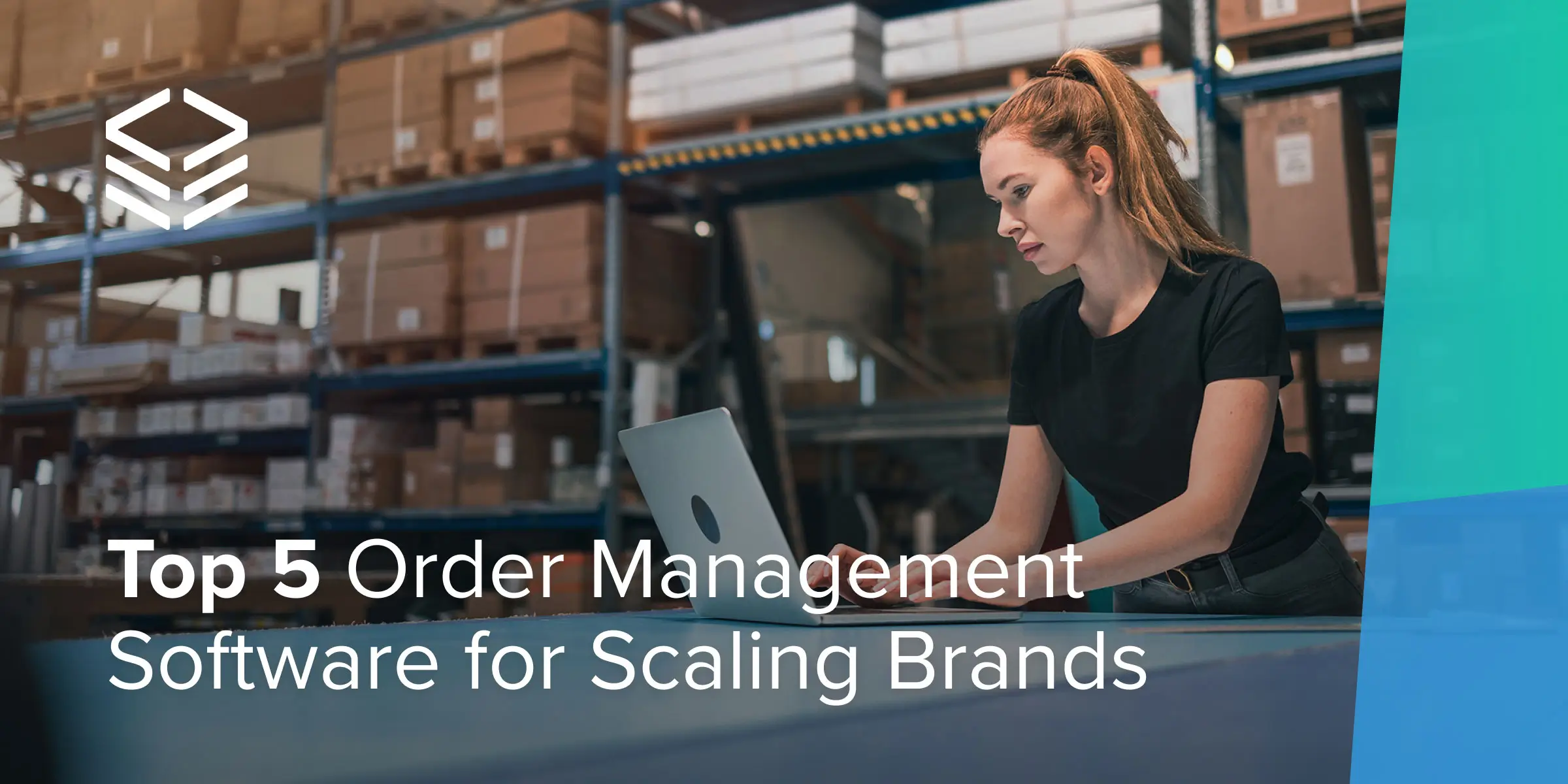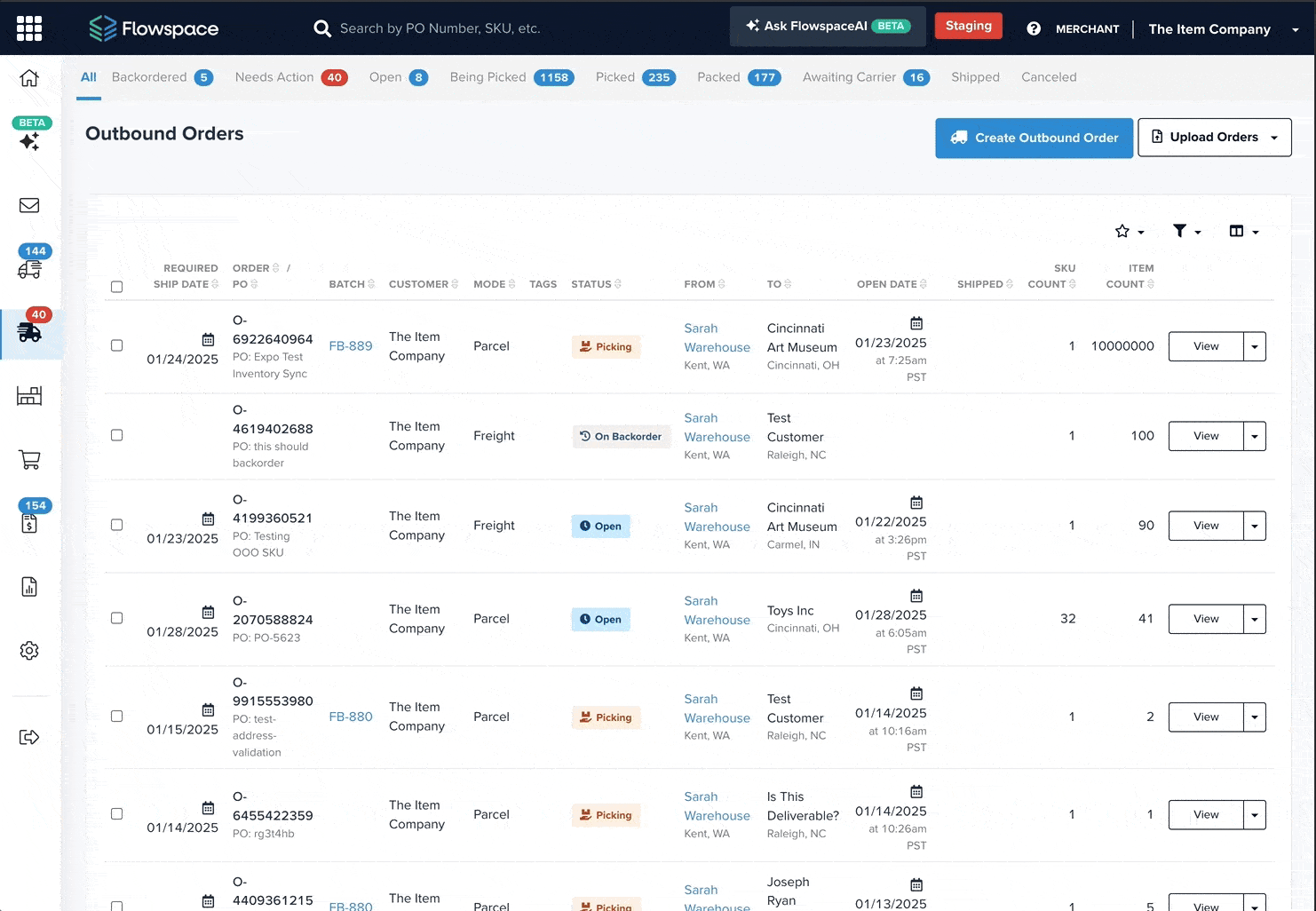 The ecommerce landscape is evolving rapidly.
The ecommerce landscape is evolving rapidly.
For scaling brands, managing fulfillment is no longer just an operational challenge—it’s a strategic one. A fragmented tech stack, rising customer expectations, and fulfillment costs that creep higher with every shipment are all signs you’ve outgrown the status quo.
That’s where the right Order Management System (OMS) comes in. While plenty of order management tools exist, only one is purpose-built for brands scaling through complexity. Flowspace combines OMS functionality with cost-optimized fulfillment across a national network. The rest? Solid options—if your needs are simpler.
Read on to discover the best order management software to help you scale efficiently and stay ahead of the competition.
What is an Order Management System?
An order management system (OMS) is a centralized platform that handles inventory tracking, order processing, and fulfillment automation across multiple sales channels.
It integrates with eCommerce platforms (Shopify, Amazon), warehouse management systems (WMS), and third-party logistics (3PLs) to manage the journey of each item in the customer’s order, from order creation to delivery.
A modern OMS integrates with:
- eCommerce platforms (Shopify, Amazon, Walmart, BigCommerce, WooCommerce, etc)
- Warehouse management systems
- Third-party logistics (3PLs) and fulfillment providers
These capabilities should just be the beginning, however. As global eCommerce sales are projected to reach $7.4 trillion by 2025, a traditional OMS that only tracks orders isn’t enough. The best systems optimize fulfillment to reduce shipping costs, improve delivery speeds, and help brands scale profitably.
Top 5 Order Management Systems for Scaling Brands
Choosing the right OMS depends on your business size, fulfillment complexity, and growth strategy. Here’s how they stack up:
Software | Best For | Key Differentiator |
Flowspace | Scaling DTC & omnichannel brands | Fulfillment Management Solution (FMS) + AI-driven fulfillment cost optimization |
Brightpearl | High-growth eCommerce brands | End-to-end retail operations |
Skubana | Multi-channel & marketplace sellers | Seamless integrations with Amazon/Walmart |
Cin7 | Wholesale & B2B eCommerce | Built-in EDI & warehouse management |
Linnworks | Marketplace-heavy brands | Best for Amazon/eBay/Walmart sellers |
1. Order Flow By Flowspace – Best for Fulfillment Optimization & Cost Reduction
Flowspace isn’t just an OMS—it’s a fulfillment-first solution built to simplify growth. With built-in order management, a nationwide warehouse network, and cost-optimized fulfillment, Flowspace helps brands remove friction and scale with confidence.
Why Brands Choose Flowspace:
- Optimizes fulfillment cost with AI-powered order routing
- Unlocks instant access to a national warehouse network
- Tracks inventory in real time across every location and channel
- Reduces delivery times without overcomplicating ops
- Integrates with the systems you already use
This means you can automate and streamline processes, and use various tools to meet fulfillment requirements at scale. You don’t have to stop or start at order management.
Best For:
-
Brands outgrowing manual workflows and disconnected tools
-
Ops leaders needing better visibility and fewer fulfillment fires
-
Teams under pressure to lower costs and speed up shipping
-
Execs looking to scale without adding headcount or overhead
2. Brightpearl – Best for Fast-Growing Brands

Brightpearl is an end-to-end retail operations platform designed for fast-growing ecommerce brands. It automates order processing, integrates with major ecommerce platforms (Shopify, Amazon, Magento), and features demand forecasting to optimize inventory.
Why Brands Choose Brightpearl:
- Inventory demand planning
- Integrated POS, warehouse, and fulfillment management
- Order routing to optimize fulfillment
Best For: Enterprise-level eCommerce brands.
3. Skubana (by Extensiv) – Best for Multi-Channel Sellers
Skubana is built for brands anchored to marketplace selling (Amazon, Walmart). It synchronizes inventory, provides intelligent order routing, and integrates with third-party logistics (3PLs) for streamlined fulfillment.
Why Brands Choose Skubana:
- Inventory analytics and demand forecasting
- Order routing for 3PL and in-house fulfillment
- Integrations with Shopify, Amazon, Walmart, eBay
Best For: Brands managing multiple sales channels and high SKU volumes.
4. Cin7 – Best for Wholesale & Retail Brands
Cin7 specializes in inventory management for B2B brands with legacy EDI needs. It integrates with EDI platforms, enabling brands to manage retailer relationships.
Why Brands Choose Cin7:
- EDI integration for wholesale and B2B orders
- Retail and warehouse inventory syncing
- Multi-location order routing
Best For: Brands managing B2B, retail, and DTC simultaneously.
5. Linnworks – Best for Marketplace-Heavy Brands
Linnworks is a strong choice for marketplace-heavy operators looking for control, not scale. It automates order workflows, simplifies inventory tracking, and supports cross-border commerce.
Why Brands Choose Linnworks:
- Amazon/eBay/Walmart integrations
- Cross-border commerce support
- Automated fulfillment routing
Best For: Brands selling on marketplaces and international platforms.
How to Choose the Right Order Management Software
For scaling brands, the challenge isn’t just managing orders—it’s managing the chaos that comes with growth.
More channels. More warehouses. More customer expectations. What used to work starts breaking down. Suddenly, your operations team is stitching together spreadsheets, chasing tracking numbers, and troubleshooting fulfillment issues that shouldn’t exist in the first place.
That’s why choosing the right OMS isn’t about features—it’s about fit.
Start With the Real Problems
If your current setup is holding you back, it’s probably not because you’re missing a toggle or an integration. It’s because your systems aren’t talking to each other. Your team is working in silos. And your fulfillment network—if you have one—isn’t optimized for cost or speed.
You may not call it a bottleneck yet. But the signs are there:
-
Customer complaints creeping up.
-
Inventory showing as “in stock” when it’s not.
-
Orders delayed because they were routed to the wrong warehouse—or the only warehouse.
-
Ops teams drowning in exceptions and fire drills.
-
Executives asking why logistics costs keep climbing, even as the business grows.
You don’t need more tools. You need fewer headaches.
Choose a Platform That Solves at the System Level
A modern OMS should do more than process orders. It should orchestrate fulfillment in a way that supports your long-term growth goals. That means real-time visibility, smart automation, and built-in flexibility—not just for today’s volume, but for tomorrow’s scale.
Flowspace was built to solve exactly this.
With Flowspace, you get:
- Centralized command of your order ecosystem – One platform to track, manage, and optimize orders from click to doorstep.
- Inventory visibility that matches your pace – Real-time syncing across every location and channel, so you’re never selling what you don’t have.
- Intelligent order routing that drives ROI – Our Network Optimization System dynamically selects the best fulfillment node based on cost, proximity, and speed.
- Seamless integration with your existing stack – Ecommerce platforms, marketplaces, ERPs, WMSs—we connect them all.
And because Flowspace is fulfillment-first, it’s not just software—it’s backed by a nationwide network of warehouses and 3PLs, so you can scale your footprint without building it from scratch.

Don’t Just Manage. Optimize.
The wrong OMS keeps your brand reactive. You’re always catching up. The right one puts you in control—proactively reducing costs, protecting margins, and improving customer experience at scale.
If you’re planning to grow, don’t just plug in another tool. Partner with a platform that was built for scale from day one. One that understands fulfillment isn’t a backend function—it’s a competitive advantage.
That’s what Flowspace is for.
Want to see how Flowspace can optimize your order fulfillment? Schedule a Demo
FAQs
What is an order management system?
An order management system (OMS) is a software platform that provides centralized management of inventory tracking, order processing, and fulfillment automation across multiple sales channels.
Why is order management software important?
Order management software is crucial for facilitating growth and improving fulfillment efficiency while minimizing manual errors. It enables businesses to effectively manage multiple sales channels and enhance overall operational performance.
What are the key features to look for in an ecommerce order management system?
When choosing an ecommerce order management system, prioritize features like inventory management, order tracking, multi-channel integration, automation, and robust reporting, inventory visibility as these will significantly improve accuracy and efficiency in your operations.
How can businesses choose the right order management software?
Carefully assess your specific needs, compare available options, request demos, and evaluate scalability and support. This careful consideration ensures a solution that aligns with their operational goals.





